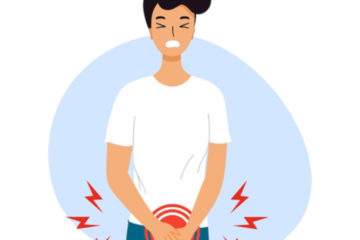
Prostate cancer, a silent threat that affects millions of men worldwide, often lurks in the shadows, showing minimal symptoms until it reaches an advanced stage. The statistics are stark – prostate cancer is one of the leading causes of cancer-related deaths among men. However, there’s a powerful tool that can potentially change this narrative: early detection through screening. In this blog post, we’ll unravel the urgency surrounding prostate cancer, explore the risks it poses, and emphasize the pivotal role that screening plays in saving lives. Join us on this journey to understand why getting screened now is not just a suggestion but a crucial imperative for every man’s well-being.
Understanding Prostate Cancer
Prostate cancer is a complex and prevalent disease that affects the prostate gland, an essential part of the male reproductive system. To comprehend the nuances of prostate cancer, it’s crucial to explore its anatomy, risk factors, symptoms, diagnosis, and potential treatments. Let’s delve into a detailed understanding of prostate cancer:
Prostate Anatomy
The prostate is a small, walnut-sized gland situated just below the bladder and in front of the rectum. It wraps around the urethra, the tube that carries urine from the bladder out of the body. The primary function of the prostate is to produce seminal fluid, which nourishes and transports sperm.
Risk Factors for Prostate Cancer
Understanding the risk factors associated with prostate cancer is essential for identifying individuals who may be more susceptible to developing this disease. While the exact cause of prostate cancer remains unknown, several factors have been identified that can increase the likelihood of its occurrence. Here’s a detailed exploration of the risk factors for prostate cancer:
Age: Prostate cancer is primarily an age-related disease, with the risk increasing significantly as men grow older. The majority of prostate cancer cases occur in men aged 65 and older. While it can occur in younger men, the incidence rises substantially with age.
Family History: A family history of prostate cancer can elevate an individual’s risk. Men with a father, brother, or son diagnosed with prostate cancer have a higher likelihood of developing the disease themselves. The risk is even greater if the affected relative was diagnosed at a younger age.
Genetics: Genetic factors play a role in prostate cancer risk. Certain inherited gene mutations, such as those associated with the BRCA1 and BRCA2 genes, are linked to a higher risk of developing prostate cancer. Individuals with a family history of hereditary cancers may undergo genetic testing to assess their susceptibility.
Race and Ethnicity: Prostate cancer exhibits significant racial and ethnic disparities. African-American men have the highest incidence rate and are more likely to develop aggressive forms of the disease. Asian-American and Hispanic/Latino men have a lower risk compared to Caucasian men. The reasons for these disparities are complex and involve a combination of genetic, environmental, and healthcare access factors.
Geography and Environment: Geographic and environmental factors may influence prostate cancer risk. Incidence rates vary worldwide, with higher rates observed in North America, Northwestern Europe, Australia, and the Caribbean. Lifestyle and environmental factors, such as diet, exposure to certain chemicals, and access to healthcare, may contribute to these regional differences.
Dietary Factors: While the role of diet in prostate cancer risk is not fully understood, some dietary patterns and choices may influence susceptibility. High consumption of red meat, particularly processed meats, and a diet low in fruits and vegetables have been associated with an increased risk of prostate cancer. On the contrary, diets rich in antioxidants, omega-3 fatty acids, and certain vitamins may have a protective effect.
Obesity: Obesity has been linked to an increased risk of developing more aggressive forms of prostate cancer. The exact mechanisms behind this association are still under investigation, but hormonal changes, inflammation, and insulin resistance are potential factors.
Occupational and Environmental Exposures: Occupational exposures to certain chemicals, such as cadmium, may contribute to an elevated risk of prostate cancer. Additionally, exposure to Agent Orange, a herbicide used during the Vietnam War, has been associated with an increased risk among military veterans.
Symptoms of Prostate Cancer
Prostate cancer is often referred to as a “silent” disease in its early stages because it may not produce noticeable symptoms. However, as the disease progresses, certain signs may emerge. Men must be aware of these symptoms and seek medical attention if they experience any of the following:
Urinary Changes
- Difficulty starting or stopping urination.
- Weak or interrupted urine stream.
- Frequent urination, particularly at night (nocturia).
- Urgency to urinate.
- A sense of incomplete emptying of the bladder.
Blood in the Urine or Semen
- Hematuria, or blood in the urine, can be a concerning symptom and should prompt immediate medical attention. It may be visible to the naked eye or detected through laboratory tests.
- Hematospermia, or blood in the semen, is another potential symptom that requires investigation.
Pelvic Discomfort or Pain
- Persistent pain or discomfort in the pelvic region, lower back, hips, or thighs may indicate the spread of prostate cancer beyond the prostate gland. This discomfort can be a result of cancer affecting nearby tissues and nerves.
Erectile Dysfunction
- While erectile dysfunction (ED) is a common issue in men, persistent or worsening ED, especially when accompanied by other symptoms, might be a sign of prostate cancer. The tumour’s impact on blood flow and nerves in the pelvic region can contribute to sexual dysfunction.
Painful Ejaculation
- Pain or discomfort during ejaculation may be a symptom of advanced prostate cancer, particularly if cancer has spread to surrounding tissues.
Importance of Early Detection
The importance of early detection in the context of prostate cancer cannot be overstated. Detecting prostate cancer in its early stages significantly enhances the chances of successful treatment, improved outcomes, and, ultimately, saving lives. Here’s a detailed exploration of the key reasons why early detection is crucial:
Increased Treatment Options
- Early detection allows for a wider array of treatment options. When prostate cancer is identified at an early, localized stage, treatments such as surgery, radiation therapy, and focal therapies can be more effective. In some cases, these treatments may even eliminate the cancer.
Improved Survival Rates
- Prostate cancer is generally slow-growing, and many men with the disease may not experience symptoms until it has reached an advanced stage. Early detection, often through routine screenings like the PSA test and digital rectal examination (DRE), enables physicians to identify the cancer when it is more treatable. Higher survival rates are associated with early-stage diagnoses.
Reduced Treatment Intensity
- When prostate cancer is detected at an early stage, less aggressive treatment options may be considered. This can result in fewer side effects and a better quality of life for the patient. In contrast, advanced-stage prostate cancer may require more aggressive treatments, which can have a more significant impact on a person’s well-being.
Minimized Risk of Spread (Metastasis)
- Prostate cancer that is confined to the prostate gland has a lower likelihood of spreading to other parts of the body. Early detection and treatment help prevent the cancer from metastasizing to distant organs, which is a critical factor in determining the long-term prognosis.
Potential for Curative Treatment
- In some cases, early detection may enable curative treatment, eliminating the cancer. This is particularly true for localized prostate cancer, where surgical removal or targeted therapies can eradicate the tumour and offer a chance for a cancer-free life.
Active Surveillance as an Option
- Early detection may lead to the consideration of active surveillance for certain cases of low-risk prostate cancer. Active surveillance involves closely monitoring the cancer’s progression without immediate aggressive treatment. This approach aims to avoid unnecessary side effects while ensuring timely intervention if the cancer becomes more aggressive.
Enhanced Quality of Life
- Timely detection and intervention can contribute to a better overall quality of life for individuals diagnosed with prostate cancer. Managing the disease at an early stage often involves less intensive treatments, reducing the impact on daily activities and minimizing potential side effects.
Economic Considerations
- Early detection and treatment of prostate cancer can also have economic implications. The cost of treating advanced-stage prostate cancer, which may involve more extensive medical interventions and ongoing care, can be significantly higher than the costs associated with early-stage management.
Peace of Mind and Reduced Anxiety
- Regular screenings and early detection provide individuals with a sense of control over their health. Knowing that prostate cancer is being actively monitored or treated at an early stage can alleviate anxiety and allow individuals to make informed decisions about their care.
Screening Guidelines and Controversies
Despite the potential benefits of early detection, there has been ongoing debate about the optimal age to start screening and the frequency of screening. Different organizations provide varying recommendations, and individualized discussions between men and their healthcare providers are crucial to making informed decisions based on personal health history and risk factors.
It’s essential to weigh the potential benefits of early detection against the risks of false positives, overdiagnosis, and potential side effects of treatment. Some prostate cancers may be slow-growing and not pose an immediate threat to a man’s health, leading to the consideration of active surveillance rather than immediate treatment in certain cases.
Empowering Men to Take Control of Their Health
Encouraging men to prioritize their health and participate in regular screenings for prostate cancer is a critical aspect of public health awareness. Dispelling myths and addressing concerns about the screening process can help reduce barriers to seeking healthcare and facilitate early detection.
Educational Initiatives: Public health campaigns and educational programs can provide information about the importance of prostate cancer screening, the available methods, and the potential outcomes. This can empower men to make informed decisions about their health.
Community Outreach: Engaging with communities through workshops, seminars, and community health fairs can contribute to increasing awareness and breaking down stigmas associated with prostate health.
Healthcare Provider Communication: Establishing open and honest communication between healthcare providers and their male patients is crucial. Discussing the benefits and risks of screening, considering individual risk factors, and addressing concerns can lead to more informed decision-making.
Conclusion
Getting screened now is not merely a suggestion; it is an imperative. The earlier prostate cancer is detected, the more treatment options are available, the higher the chances of a cure, and the better the overall quality of life for those affected. Regular screenings, open communication with healthcare providers, and staying informed about risk factors empower individuals to take control of their prostate health.
Don’t wait for symptoms to manifest or assume that prostate cancer is an older man’s concern. The reality is that early detection knows no age limit, and being proactive in your health can make all the difference. It’s a commitment to yourself, your well-being, and the potential for a longer, healthier life.
So, gentlemen, the call to action is clear – get screened now. Whether you’re in your 40s, 50s, or beyond, prioritise your prostate health. Schedule that screening, have those conversations with your healthcare provider, and encourage the men in your life to do the same. Prostate cancer may be a formidable opponent, but with early detection, we have the power to turn the odds in our favour.
Remember, knowledge is your ally, and taking charge of your health today can pave the way for a brighter and healthier tomorrow. Don’t let prostate cancer catch you off guard – get screened now and take the first step towards a life of proactive well-being. Your health is your greatest asset, and it’s time to invest in it.
Dr. Sumit Sharma is an experienced urologist, andrologist, and kidney transplant surgeon with over 20 years of clinical experience. He is the founder of the Department of Urology at multiple hospitals in Gurgaon and has established successful kidney transplant programs across the city.
With a commitment to the highest standards, Dr. Sumit Sharma ensures personalised, professional treatment, making your well-being the primary focus. Choose Dr. Sumit Sharma for outstanding Urological care in Gurgaon.



